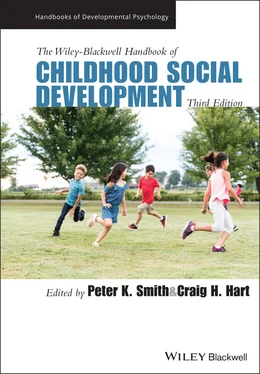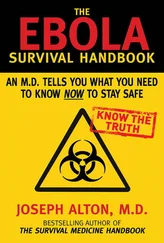Turning to another example, the phenomenon of bullying illustrates how microsystems can interact in children’s social development. Bullying is likely to be a familiar part of young people’s social experience either through experiencing it, witnessing it, or hearing about it happening to others. It is a social problem, involving repeated aggressive behaviors intended to cause harm to others where there is some form of power imbalance between the aggressor and victim (Olweus, 1997; and Chapter 32, this volume). While reported rates vary between countries (Bradshaw et al., 2017), estimated prevalence based on self‐reported international data suggests between 10 and 20% of children experience bullying more than occasionally at school (Savahl et al., 2019). It is associated with a range of negative consequences on physical and psychological health (Iyer‐Eimerbrink & Jensen‐Campbell, 2019), and so can play a significant part in shaping children’s development.
Research into bullying often examines the characteristics of children (such as personality traits, skills, and attributes) in bully and victim roles to explain their involvement (see Mitsopoulou & Giovazolias, 2015). A concern with attempts to “profile” bullies and victims is the implication that these are consistent roles which remain stable, and it also positions the child as the cause of the problem and neglects outside influences (Swearer & Doll, 2001). Additionally, dichotomizing bullying into “bullies” and “victims” implies that bullying is a dyadic encounter only involving a bully and a victim. As research in the field has progressed, these assumptions have been questioned. First, evidence has shown that children can be both bullies and victims and may move fluidly between these roles at different times (Swearer & Hymel, 2015). In addition, there has been increased attention on the wider peer group and the role they take in bullying situations through witnessing, encouraging, or seeking to prevent it (Salmivalli et al., 1996). From an ecological perspective, bullying can be understood by examining the interactions between the characteristics of the people involved and the social context they are part of (Swearer & Doll, 2001).
The peer group and classroom environment are examples of microsystems that individuals interact with, and which impact on their development, and evidence suggests that the classroom peer ecology can enable or disable bullying (Saarento & Salmivalli, 2015). The reactions of peers establish the classroom norms surrounding bullying, which subsequently impacts on the behaviors and responses of those within the group. It has been shown that the responses of peers who witness bullying are influenced by a range of factors such as gender, levels of empathy, popularity in the peer group, relationship to the children involved, and perceived peer pressure to intervene (Lambe et al., 2019). Bullying is, therefore, part of the social ecology of the peer group.
There has been a shift towards applying ecological perspectives to understand bullying, with some examples of Bronfenbrenner’s ecological system being used to examine risk and protective factors for bullying involvement (Espelage et al., 2013). Hong and Espelage (2012) argued that children enacting or experiencing bullying are part of a complex interrelated ecological system. The young person is at the center, and their personal characteristics interact with the settings around them. Certain internal attributes can predispose children to be more prone to bullying, but these characteristics are mediated by other factors. Bullying can occur because of several conditions interacting together at different levels (Swearer & Doll, 2001).
Elements in the microsystem such as parent–child relations, family experiences, parenting approaches, school environment, and peer relationships are risk factors for bullying (Hong & Espelage, 2012; Lee, 2011). The local neighborhood where schools are based also seems to influence bullying, such as city versus rural settings, and strength of community ties (Mazur et al., 2017; Pitsia & Mazzone, 2020). Factors such as immigration and poverty impact on the community environment, which in turn can affect contexts such as family and school (Hong et al., 2014b). These findings indicate that children’s behavior in school is shaped by the wider community context they are situated in and associated socioeconomic factors.
Within the mesosystem, teacher involvement in the relations between microsystems (such as with the home, and with peers) are important. Teachers serve as role models for how peers should interact, and therefore are an important influence in shaping the peer ecology in their classrooms (Hendrickx et al., 2016). Teacher–pupil relationships provide a framework by which children build social competence and shape their peer interactions. Teachers, therefore, can provide a valuable developmental model, mediating children’s social development and facilitating connectedness and bonding within the classroom (Bouchard & Smith, 2017).
Components of the exosystem can have an indirect influence on bullying via a trickledown effect (Patton et al., 2013). For example, parental stress created by factors such as financial pressure, personal problems, and workplace experiences can impact on parenting practices and the home environment where the child is based (Patton et al., 2013). In addition, the media is a powerful tool and evidence shows that certain forms of aggression are frequently represented in popular television programs, and that exposure to such material can impact on subsequent behavior (Coyne & Archer, 2004; Coyne et al., 2004).
At the macro level, societal laws, policies, and social and religious norms that embed discriminatory practices against minority groups can engender bullying. For example, homophobic bullying is a symptom of societal attitudes towards LGBT communities and the reinforcement of heteronormativity by the media (Hong & Garbarino, 2012; Newman & Fantus, 2015). Politically, national frameworks requiring schools to implement policies and take specific action will benefit the children attending schools at that time (Pitsia & Mazzone, 2020). Here, the macrosystem and chronosystem interact, as historical timings will impact on children’s experiences (Elder, 1998). Bullying is a more prominent social issue now than it was in the past, with statutory requirements introduced in many countries for schools to have antibullying policies and preventative measures that were not previously in place. This will mean that children’s awareness about bullying will be heightened, and their experience in school when bullying occurs will be different compared to their predecessors. In addition, bullying itself has evolved over time as a result of changes in broader social milieu (Smith & Berkkun, 2020). Increase in societal usage of technology and advancing tools for online communication have enabled bullying to take place in circumstances that would previously have required face‐to‐face interaction (Smith‐Darden et al., 2017). The term “cyberbullying” (Espelage et al., 2013) has been coined to describe bullying happening via the use of technology, and new terminology has been developed to label the various manifestations of cyberbullying (for example, trolling) (Maunder & Crafter, 2018).
There is evidence that young people who are bullied at school are more likely to be bullied in the workplace in adulthood (Brendgen & Poulin, 2018). Brendgen and Poulin propose “evocative person‐environment transactions” (p. 35) to explain these child–adulthood bullying trajectories, whereby individual vulnerability to bullying based on personal characteristics may incite negative behaviors from others, but also being bullied in childhood causes negative outcomes (such as depressive thoughts and feelings) which can generate negative interaction patterns with others. This resonates with Elder’s life course perspective (1998), whereby bullying in childhood leaves a legacy – impacting on people’s future trajectories, feelings about themselves, and relationships with others (Maunder & Crafter, 2018). Furthermore, using Elder’s (1998) notion of “linked lives,” experiences of bullying impact not only on the children involved, but also their parents. Parents can experience a range of emotions and respond in different ways in their desire to protect their children and are therefore involved with and affected by bullying (Hale et al., 2017; Harcourt et al., 2014). This highlights the “complex etiology” of bullying, and the constellation of factors that interact together – supporting the application of ecological perspectives (Hong & Espelage, 2012; Swearer & Doll, 2001).
Читать дальше












